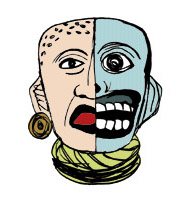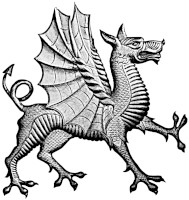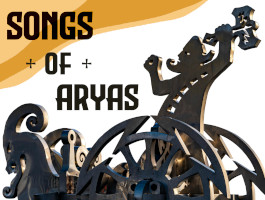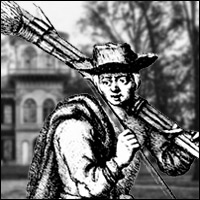Thursday, May 10th 2012
6:30-8:30 PM
Honeygo Run Regional Park Community Center
Perry Hall, MD 21128
Rec. Office, Meeting Room [first door on right]
$30 per a 6-8 week session, classes held Tuesday and Thursday subject to weather closures according to the Baltimore County Rec. Council.
Bob Light is a retired high school math teacher and former scholastic wrestler and gymnast. In 1984 he was literally dragged into the martial arts in support of his sons who wished to take up karate. Bob was skeptical of the value of anything remotely related to B-movies out of Hong Kong and was a self-described reluctant student. His instructor, Terry Krummer, a military man who had studied on the west coast before settling in Maryland, made a believer out of the skeptical father. Bob stuck with the art even after his sons dropped out, eventually taking over the class when Terry became ill.
Bob has coached wrestling at Sparrows Point High School, Parkville Senior High, and Calvert Hall. His college record was 8-0. He had more success in gymnastics where he was nationally ranked. This has resulted in a man with very strong hands. Doing wristlock drills with Bob is like getting your hand caught in a piece of machinery. Like many older karate instructors Bob is a big boxing fan, and he has pursued cross-training opportunities enthusiastically for the past twenty years.
Bob’s version of Tang Soo Do borrows heavily from wrestling, BJJ, boxing, Wing Chun and aikido. There are other influences, but these are the major threads apparent to the observer. For a weapons set Bob, has, like many other practitioners of Korean arts, chosen to invite a Filipino Martial Arts instructor to cover weapons. Bob’s class is part of the Bais-Tres-Manos Kalis-Silat-Kuntaw network. The second hour of his class is reserved for this activity under Guro Raymar Asonalleba. If Raymar cannot make class Bob will review weapon sets and black belt forms with his assistant and much abused uke Matt, a black belt under the late James Papatomious.
The class is essentially 1-hour of integrated instruction and training followed by a 1- hour advanced class which is usually only attended by the advanced adult students. I have attended Bob’s class in the past, and he does change things up some. So as the narrative of this specific hour progresses I will insert comments in brackets denoting alternative activities that I recall from past evenings.
6:15-6:30
The meeting room is 22 by 24 feet with an observation row of folding chairs against the wall in line with the entrance. A Mother, grandmother, and two small children observe the class.
The class gradually gathers: 2 new child students [brothers] who do not yet have uniforms; 1 adult green belt; 2 adult brown belts; and 3 child purple belts [children of the brown belts]; Master Bob; and Matt. The brown belts review forms with their children, Bob extends an informal invitation to meet at a local high school track for training on Saturday afternoon, and the rest warm up.
6:31
Bob and Matt line up facing the class, and Bob announces, “We’ll warm-up, then work the forms ladder, and finish with a close-range knife defense.”
Bob then begins shadowboxing and his students follow suit. [He often leads the class in jumping jacks at this point. Sometimes warms ups consist of paired shadowboxing, which often devolves into light sparring.]
Matt breaks off to advise the new students on their shadowboxing.
6:37
Bob tells the class to go to the wall and stretch their Achilles [with a static stretch] and their hip flexors [with a light kicks].
6:40
Bob introduces the forms ladder and instructs the students to drop out and observe for forms they do not know, and step back in for forms they do know. The new students have to sit this out. [On alternate nights a portion of the class will be dedicated to instructing these students in the basic forms.]
Each form takes about 50 seconds to complete. The first 9 forms are practiced by the entire class. One form is just elbow strikes.
For forms 10 and 11 the green belt steps out.
For form 12 the purple belts step out and Bob focuses on instructing the brown belts. This takes about 2 minutes of the ladder time. The brown belts ask some technical questions, and the class seems well on its way to these men assuming much of the responsibility for forms instruction.
The purple belts step back in for forms 11 and 10.
The green belt steps back in for forms 9 thru 1 and people start to sweat.
6:51
Bob calls a 90-second water break and half of the class head to the fountain in the hallway. The brown belts stay and reviewed the forms with each other.
6:53
Bob announces that they will be sparring and tells everyone to gear up. The gear is a hodgepodge of karate, kick boxing, MMA and non-specific athletic gear. The children must wear head pieces. Mouth pieces and cups are mandatory. The sparring here is light contact to the body and no contact to the head, and is based on karate point-fighting, but permits grappling.
6:55
Bob announced that they will be doing round-robin pairing with all pairs sparring at once. [Sometimes, sparring is done in a circle of students point-karate style, with judging by select students, etc.] His final note is, “Leave your egos at the door.”
6:56
Bob mentions that the forms would have been better if the “Kias” would have been emphasized, and goes on to lay out the sparring parameters, “Opportunistic grappling is permitted”, “Leg kicks are encouraged”, “Dirty tactics are encouraged.”
The class really seems to enjoy the free-sparring, particularly the kids. The rounds are called by Bob, who is busy sparring, and reflect the course of his bouts as much as anything, which gives an untimed quality to the experience. I see two takedowns by the big green belt [which are done easily, no throws to the tile being permitted] and a ‘wall-mugging’
by Bob.
7:04
Bob calls a 90-second water break as a brown belt complains to the giant green belt about being taken to the floor.
7:05
Bob declares the sparring will now go “two-on-one”. The kids love this, as two or three of them get to gang up on an adult. For the adults Bob uses this as an illustration on staying out of the middle and using a clinched opponent as a human shield. For the children this is a chance for him to stress teamwork. The larger of the two new boys really pounded on an adult during this session.
7:15
I got off of my butt to help Matt with his knee, which had apparently just ‘popped’ at the end of sparring.
7:20
Matt was back to being choked by Bob, who was demonstrating a ‘gi’ choke with the collar of the uniform from a rear standing and floor position, and with a half-nelson in.
He then had the students pair off and practice this. He stressed the importance of position and the facility of choking a larger person.
7:27
Bob demonstrates the wrist-lock counter to the choke the class had been working on.
I have to say from training under Bob a few dozen times, that he is at his best when it comes to wrist-locks and grappling in general. He really likes having his gigantic green belt available for sparring because it makes his brown belts work on counter grappling.
7:30
Bob makes some comments on the importance of training safely and not engaging in ‘horseplay’.
7:33
Bob mentions that the knife-defense set that they had not gotten to would be practiced the following Tuesday, and reiterated his invitation to meet for an informal Saturday session.
After Class
Reymar was not able to make this class so I was able to interview Master Bob about his program and some of the highlights of his martial life. During the course of our discussion I discovered that Bob was a key player in an international martial arts incident that occurred in Baltimore in 1995 and was reported in Black Belt Magazine. When Anthony Goh hosted the World Wushu Championships there had been printed reports that the Russian National Team members had been extremely rude to the local women, and even insulted a celebrity female martial artist.
Bob had served as the matchmaker for the sanshou event, the Wushu version of kickboxing that permits throws. It was he who discovered that the Russians were trying to enter an uninjured heavyweight into the semi-final round under a false name. As he noted, “So my claim to fame is I caught the Russians cheating. The local press didn’t cover it, and the attendance was real low—a bust. But I did get interviewed by this beautiful Egyptian newscaster in her flowing robes afterwards. The Egyptian fighter who won the heavyweight division was a class guy and I made it on Egyptian National TV.”
When asked to describe his art in his words, the man who had once been a reluctant student had this to say, “I do a cross with a Tang Soo Do flavor. Tang Soo Do is essentially the combat application of Tae Kwon Do. The grappling portion is essentially Hapkido though we don’t call it that. We don’t try jump-spinning kicks. We go close-quarter and try to make them into complete self-defense practitioners; a complete fighter.”
Impression
I’d have to say that I like Bob’s class for cross-training opportunities. To me the sparring is light enough that I can use it to practice defenses against kicks which I have to deal with in stick-fighting without getting busted up. The best thing about his class is the self-defense set he always does at the end, which is generally a mini grappling clinic. If you have a child or spouse that wants to train with you I’d highly recommend it as something you could get into together and both enjoy, possibly on different levels.











